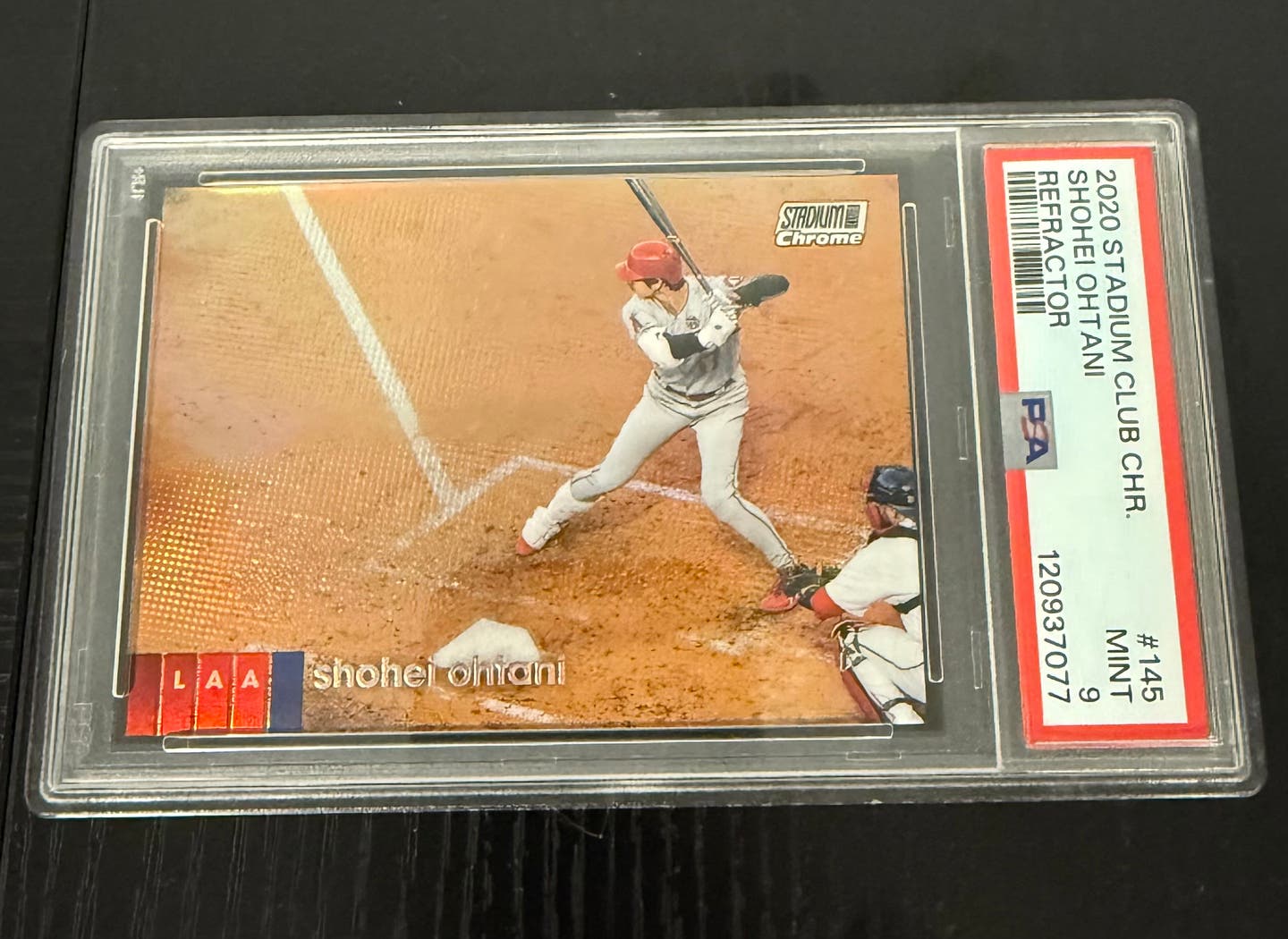Collecting 101
A look at the 2017 National Sports Collectors Convention through the eyes of attendees
By Jeffrey S. Copeland & Ron Britt
The minute we entered the show floor, we were easily reminded once again why the National Sports Collectors Convention is the gem of our hobby and a true mecca for collectors. Over the four main days of the show, July 26-30, collectors were treated to everything from being able to meet up with and purchase items for their collections from many of the most prominent dealers in the country, to acquiring autographs from a wide range of signers, to participating in a variety of card “breaks,” to being able to look at—and sometimes actually touch and/or purchase—iconic sports treasures. In short, there truly was something for everyone.
Upon entering the main floor, we were overwhelmed by the sheer size of this show. It’s easy to understand why it can take many show goers four days to visit most of the dealers and exhibits. Just inside and down the right side of the first row, Editor Bert Lehman hosted the Sports Collectors Digest booth. He welcomed individuals to the show and gave out free copies of the special convention issue, a welcomed resource, which described the many facets of the show.
Despite its enormous size, the promoters had designed the layout of the room to be easy to navigate. The aisles were appropriately spaced so the room never seemed crowded, which also allowed for easy viewing of the wares at each table and booth. At the same time, all rows were clearly numbered on large signs draped from the ceiling; thus, if browsers found items but wanted to check a few other dealers before making a purchase, it was easy to mark locations and return later. However, this isn’t always the best strategy because often an item will be gone when they go back to look again. This happened to us twice. The pace is that quick at the National.
In many ways, a trip to the National is like a tour through a museum of both the past and the present of sports history. Although most of the iconic treasures on display are beyond what the budget will allow for most folks, a walk around the room still offers a very special opportunity to view these items. At this year’s event, such treasures included the following: game-worn jerseys of the likes of Jackie Robinson, Kareem Abdul-Jabbar, Lou Gehrig, Derek Jeter, and Babe Ruth; a “who’s who” of game-used bats from everyone ranging from Aaron Judge to Musial, Mantle, Ruth, Berra (and dozens more all the way back to the Dead Ball era); signed pucks and sticks of hockey greats ranging from Wayne Gretzky to Gordie Howe, to Brett Hull; signed basketballs, shoes, and jerseys of Michael Jordan, Wilt Chamberlain, and LeBron James; the full range of game-used equipment of soccer great Pelé. Up for sale was even a wristwatch once belonging to the late Yogi Berra. If one purchased nothing at the convention, just a leisurely stroll through the history around the room would have been well worth the price of admission.
And then there were the sports cards and related memorabilia—a virtual cornucopia of nearly everything one could imagine. It didn’t matter if a collector was looking for the most recently released issues or the most obscure regional cards from the past, it was all there—in quantity. It is also great fun each year to check in with the dealers to gain their impressions of the current state of the hobby and marketplace. This year we added a twist and asked the following question: “What, in your professional opinion, will be the next hottest/most desirable card or area of collecting?” (Note: They were asked to exclude cards and items related to Mantle, Clemente, and Koufax, which have been and will continue to be right at the top of the list). Their responses were as follows:
John Trincellito of Touchdown Treasures: “Vintage Bobble Heads and Hartland Statues have never been hotter. Fathers who collected the older items as little boys are now introducing their sons and daughters to the hobby through such things as stadium give-aways, and this is leading to the younger people becoming interested in the vintage items. This is a very important and exciting trend for the hobby.”
Mark Arenteen of Star Cards & Collectibles: “Without a doubt, Hank Aaron cards, all years.” When summing up why cards other than the rookie card haven’t jumped in interest and value, he asked the rhetorical question: “Does the poor man have to die first?”
Rich Giddings of Gizmo Sportscards: “Right now, one of the most undervalued cards of all is Books Robinson’s 1957 Topps rookie card. I see that card as one of the next ‘must-haves.’ I’d also add the Bob Gibson 1959 Topps rookie, the Aaron rookie —I sold four the first day of the show—and 1966 and 1967 Topps hi-number cards.”
Wayne Johnson of Johnson’s Sports: “Vintage rookies in higher grade, especially Seaver, Nolan Ryan, and Gibson. They are being sold now way over ‘book’ in raw condition. My advice? Purchase really nice vintage cards in raw condition—and then have them graded.”
Rick Haskins, the “Pennant Man”: “Vintage pennants are dramatically increasing in popularity because they are a ‘natural’ collectible. That is, they are a great slice of sports history and appeal to all age groups. The prices right now are very modest compared to many other collectibles, which also makes them very appealing.”
W.R. George of Deals by George: “I’d say autographs of Judge and the other current ‘home run guys’ like Trout and Stanton. However, many collectors are moving away from autographed balls because of the cost of getting balls signed and the increasing price of ball holders. The prices of signed balls of modern players have about quadrupled in the past five years. I see more and more moving into having ‘paper’ items signed by these players, and I think the trend will continue (in) that direction. One word of advice: be careful when purchasing these; collect them because you admire these players and want to follow their careers. Too many get caught up in the ‘buy-for-investment’ mentality and get burned later when prices for some plummet, which leaves a bad taste in the mouths of everyone.”
Jerry Hersh of Jem Associates: “Right now, the cards of Carl Yastremski are incredibly undervalued, and not just his rookie card. I see his cards jumping in popularity in the coming years.”
Kip Ingle of Kip Ingle & Associates: “Autographs of Judge, Bellinger, and other highly regarded rookies. I’d also include autographs of Hall-of Famers with the ‘HOF’ inscription on them; that inscription is growing more and more important to many.”
Bill Zimbleman of Shoebox Cards: “No doubt in my mind—cards of Frank Robinson, led by his rookie card. At the same time, I can’t keep in stock rookie cards of African-American players from the 1950s—Newcombe, Doby, Paige, and others—because people are paying much more attention now to how much they influenced the history of the game. I see their cards as one of the next major areas of interest for all collectors.”
Kit Young of Kit Young Cards: “I believe the next big area will be nice condition cards from the early to mid-1960s—in particular 1963-1967—and especially the high numbers.”
Craig Shakespeare of Lelands: “Memorabilia of all types related to Pete Rose. We just sold the ball he hit to break Ty Cobb’s hit record for $410,000. Rose items are now really increasing in value.”
Chris and Kristin Buckler of Louisville Sports Cards: “Those who were born in and collected cards in the 1970s are returning to the hobby in full force as they try to complete sets from their childhood. They are finding the cards in great quantity, but they are also finding it a great challenge to get the cards in superb condition; therefore, the 1970s cards in nice condition have really taken off. At the same time, one older card in particular is really gaining interest: the 1958 Topps rookie card of Orlando Cepeda. It is currently greatly undervalued.”
Tom Daniels (currently in the Top 10 of those in the PSA Registry collecting Red Man baseball cards) of Baseball Card Shoppe: “No doubt in my mind—1963 and 1966 Topps, especially the high numbers. Watch—they’ll be next!”
Bruce and Bonita Paynter of Windy City Sports Shows: “The next area, in our judgment, will be nice condition star cards from the ‘non-Topps’ sets, like 1963 Fleer, 1961 Post Cereal, and regional issues. These have been overlooked by so many for so long, and people are now gravitating toward them, especially as the prices for cards of mainstream companies have jumped so high.”
Kevin Savage of Kevin Savage Cards: “An area to watch would be Hall of Famers in the T206 set who aren’t as well known as the big names that usually get all the press from that issue. In higher grade, these are very undervalued right now—and still affordable for those who are looking to acquire important cards from an iconic set.”
Kent Garnett, who has participated in every National from the very first, from Pennant Fever: “The next desirable cards and other memorabilia should be those that mean something to you. Collect items important to you. Don’t collect for investment. Collect for the fun of it and for the fellowship that continues to grow in our great hobby. Attend the National and other shows every year, get involved in the hobby in every way you can, and help us preserve the history of the sports we love. In short, above everything else, have fun and love what you collect.”
The sage advice from these individuals is a nice platform for us all as we continue to build our collections and become more involved in the hobby. Bravo to all of them for sharing their thoughts. As we walked around the convention floor, we saw many of the “trends” they mentioned already coming to life before our very eyes.
TRISTAR Productions also hosted the Autograph Pavilion, and again did an incredibly PSAfine job. It should be mentioned just how passionate those who collect autographs are in this segment of the hobby. One family we met had flown in from Fayetteville, Arkansas, just for the opportunity to acquire an autograph from and say hello to “Mean Joe Greene,” their favorite football player of all-time. They asked that a big thank-you be sent along to TRISTAR for helping make their dream come true.
In addition, PSA added something this year that everyone we visited with hoped would continue in future years: individual, encased, custom baseball cards of the attendees. This was a classy move on PSA’s part, and the effort was incredibly appreciated by those who participated. Basically, individuals could put on either a Cubs, White Sox, or Yankees jersey, hold a bat belonging to a player from the team, and then stand in whatever pose they wished as pictures for the custom cards were taken. About three to five minutes later out would pop a special, “one-of-one” custom card of the attendee. These were beautifully done. They were also free of charge.
To wrap up, this year’s National was a rousing success on every level. Cards and memorabilia of all types were acquired for collections, old friends met and visited once again, and new friends and contacts were made. However, what nearly everyone takes away most of all is the pure joy and excitement of our great hobby, which only whets the appetite for more involvement in the hobby.
Jeffrey S. Copeland is a freelance writer who can be reached at jscottcope@gmail.com. Ron Britt is a baseball historian who can be reached at sisboombah5764@hotmail.com. Both would appreciate notes from attendees who would like to share their experiences at the National this year for possible inclusion in future articles.








